All Paper Economy
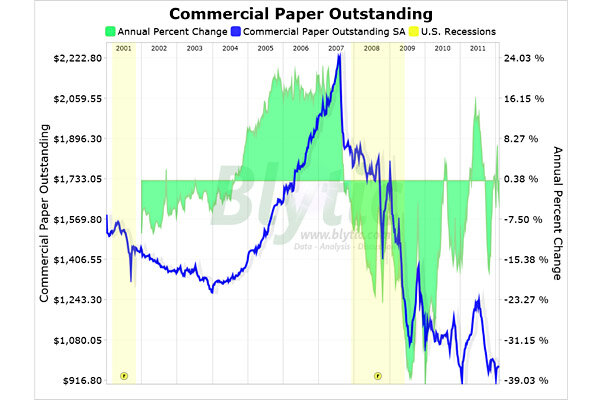 Commercial paper flat in January
Commercial paper flat in JanuaryIn January commercial paper generally wen flat while still contracting at a rate of 4.12 percent on a year-over-year basis to $972.90 billion, a level that is still substantially lower than even the worst periods of the last two recessions.
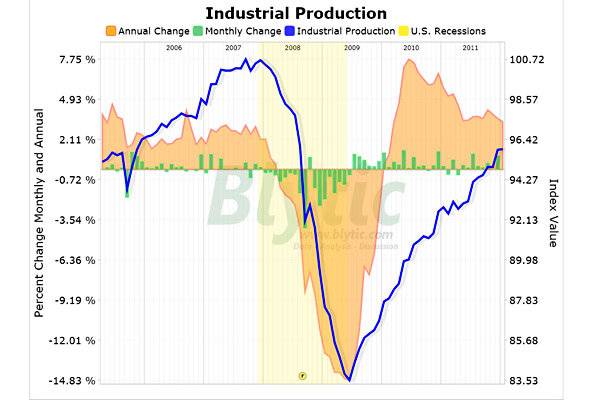 Industrial production improves
Industrial production improvesTotal industrial production increased 0.3 percent from December and rose 3.35 percent above the level seen in January 2011.
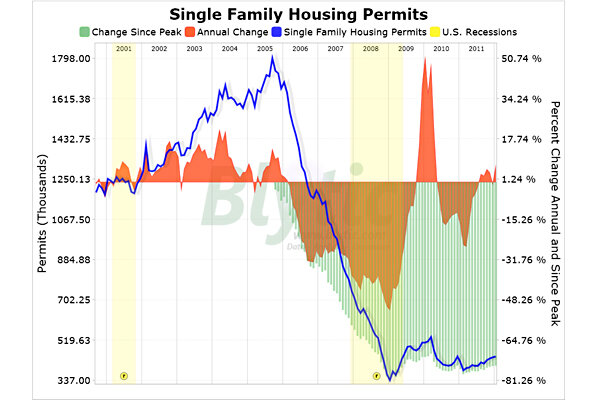 Housing market mixed; still fragile
Housing market mixed; still fragileSingle family housing permitsincreased 0.9 percent from last month to 445,000 single family units, but single family housing starts declined 1.0 percent to 508,000 units.
 Unemployment claims drop by 13,000
Unemployment claims drop by 13,000Initial unemployment claims declined by 13,000 and continued claims by 100,000 to well below the closely watched 400,000 level.
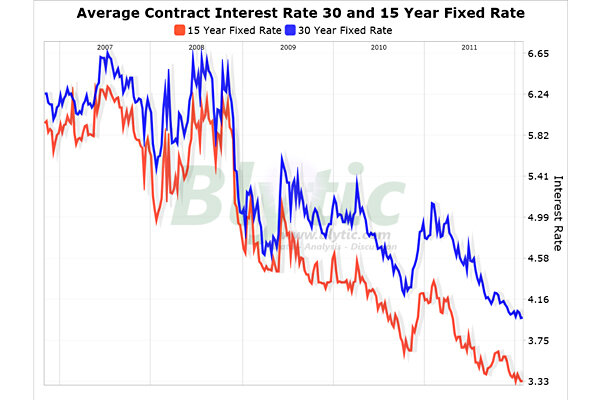 Mortgage rates inch up, but downward trend continues
Mortgage rates inch up, but downward trend continuesThe average rate for a 30 year fixed rate mortgage increased 1 basis point to 3.98 percent since last week, but the downward trend has yet to find its bottom.
 Retail sales are up 4.8 percent from last year
Retail sales are up 4.8 percent from last yearRetail sales in January increased 0.4 percent from December and 4.8 percent from last year. The data shows a rough correlation between home value appreciation and retail spending.
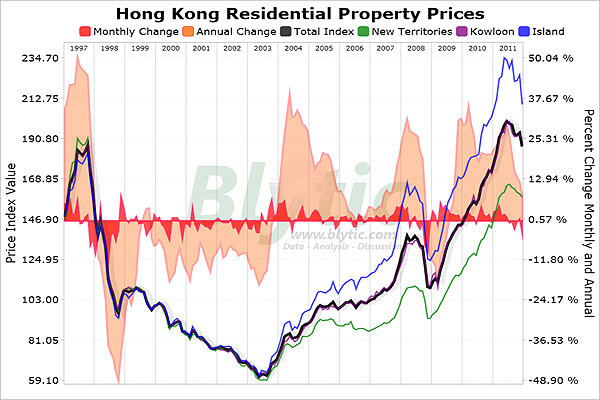 Signs of a Hong Kong real estate bubble?
Signs of a Hong Kong real estate bubble?The price of residential properties in Hong Kong declined 3.8 percent since November, according to a report by the University of Hong Kong.
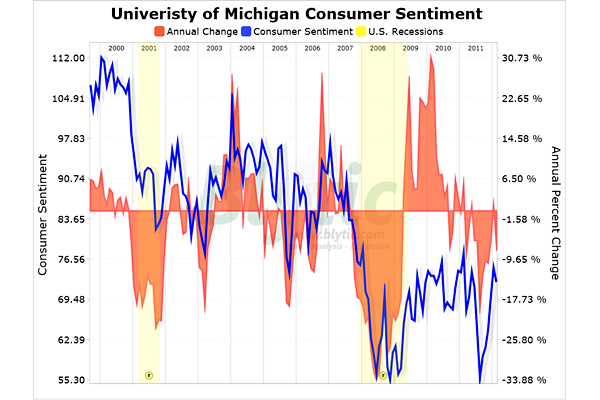 Consumer confidence slides
Consumer confidence slidesEarly reports indicate that consumer expectations will drop in February, indicating that consumers are tightening even further on spending.
 Jobless claims drop
Jobless claims dropInitial unemployment claims declined 15,000 to 358,000 claims from last week’s revised 373,000 claims while continued claims increased by 64,000.
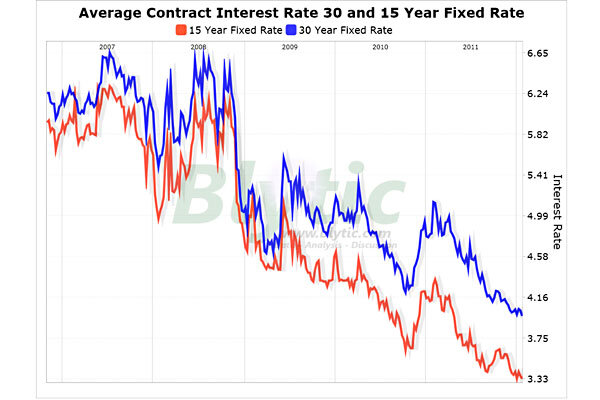 Mortgage rates: How low can they go?
Mortgage rates: How low can they go?the average rate for a 30 year fixed rate mortgage dropped to 3.33 percent since last week, while the purchase application volume increased 0.1 percent and the refinance application jumped 9.4 percent over the same period.
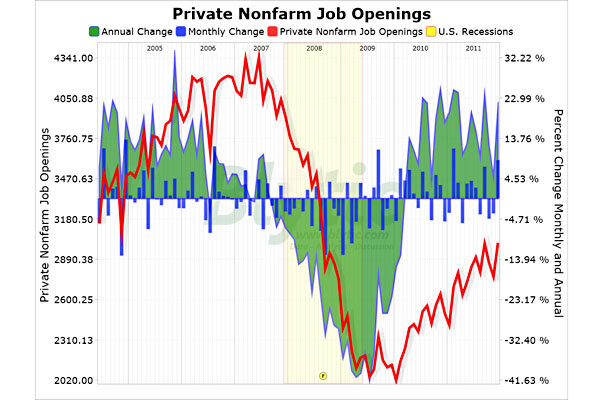 Job openings increase
Job openings increasePrivate job “openings” increased 8.79 percent since November, climbing 20.36 percent above the level seen in December 2010.
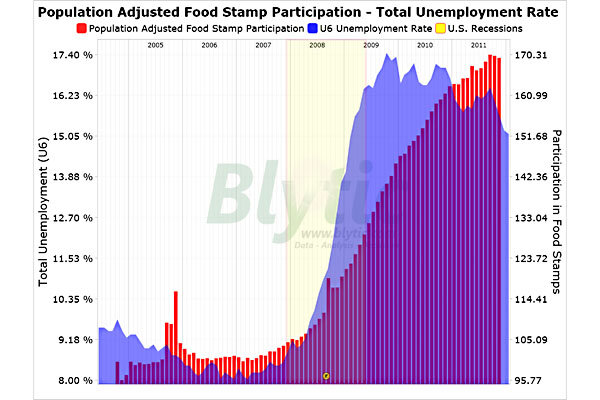 Food stamp use continues to rise
Food stamp use continues to riseHousehold participation in the federal food stamp program increased 5.82 percent on a year-over-year basis, while household participation increased 7.46 percent.
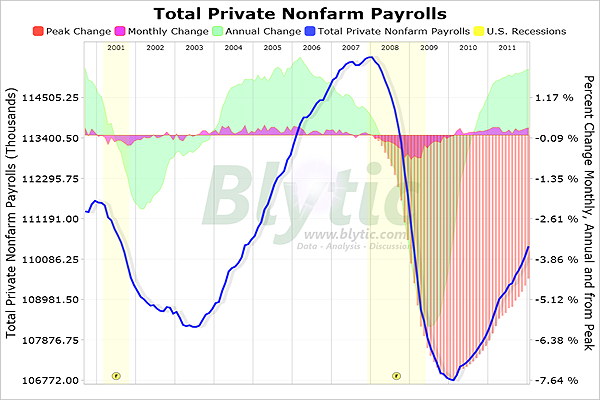 Private sector payrolls and jobs are up
Private sector payrolls and jobs are upNet nonfarm payrolls added 257,000 jobs in January and private sector jobs are 2 percent above the level seen a year ago.
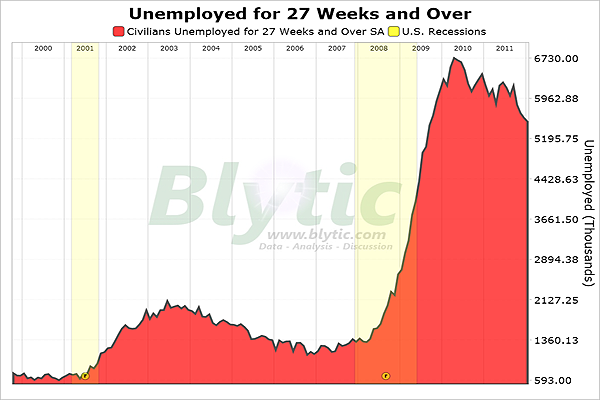 Long term unemployment still epically distressed
Long term unemployment still epically distressedConditions for the long term unemployed were mixed in January. Comparatively, they're still epically distressed.
 Unemployment rate drops to 8.3 percent
Unemployment rate drops to 8.3 percentToday's employment situation report from the Bureau of Labor Statistics shows total unemployment in January declined to 8.3 percent.
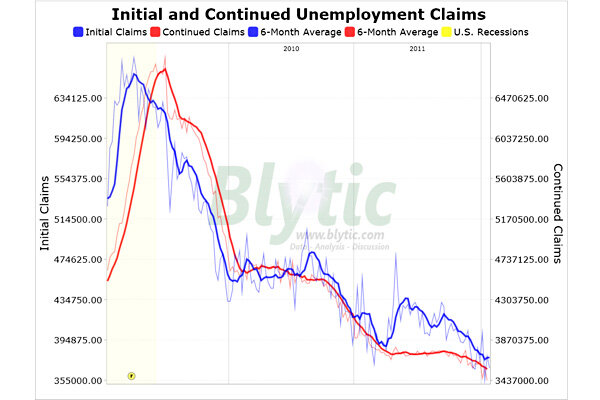 Jobless claims drop by 12,000
Jobless claims drop by 12,000“Initial” unemployment declined 12,000 to 367,000 claims from last week’s revised 379,000 claims, while “continued” claims declined by 130,000.
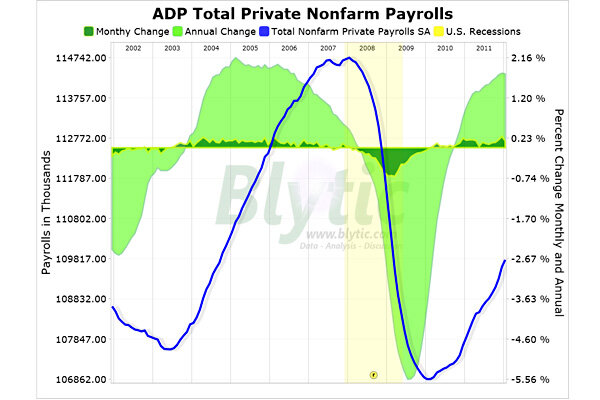 Private employers add 170,000 jobs
Private employers add 170,000 jobsThe situation for private employment in the U.S. improved in January as private employers added 170,000 jobs in the month bringing the total employment level 1.77 percent above the level seen in January 2011.
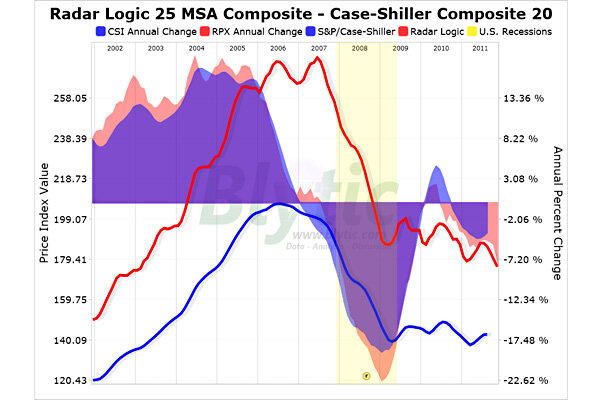 Home prices fall again
Home prices fall againWith slowing summer/fall transactions has come a notable decline of prices, with the national index declining 1.8 percent since October and falling 7.11 percent below the level seen in November 2010.
 Unemployment claims increase this week
Unemployment claims increase this weekSeasonally adjusted “initial” unemployment increased 21,000 to 377,000 claims from last week, while seasonally adjusted “continued” claims increased by 88,000.
 Existing home sales slowed in December
Existing home sales slowed in DecemberPending home sales dropped 3.5 percent since November, but increased 5.5 percent above December 2010 levels.























